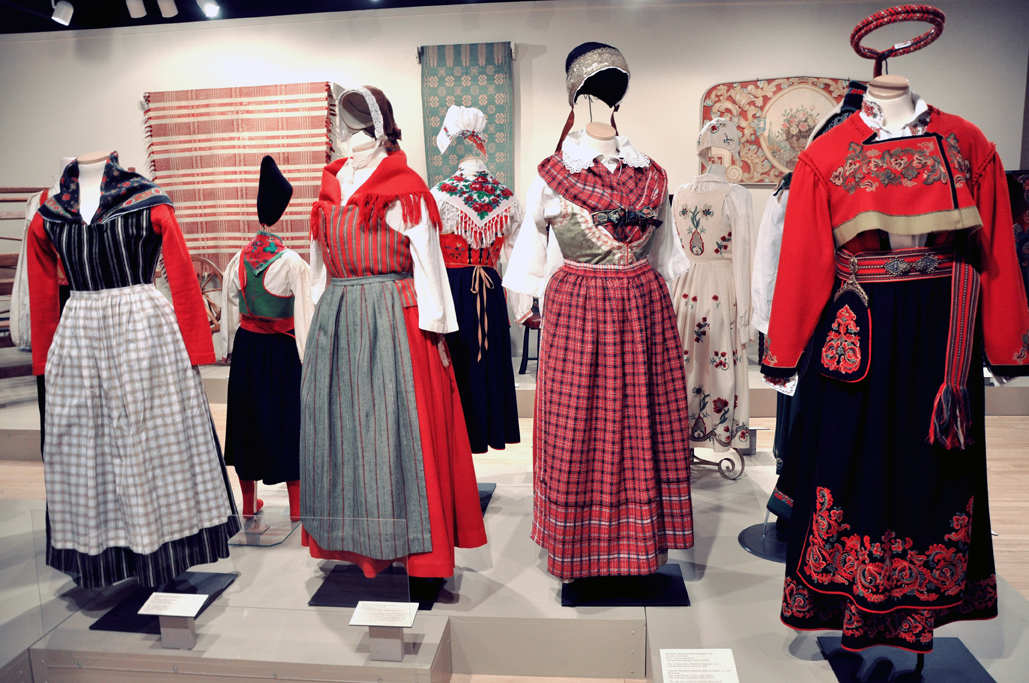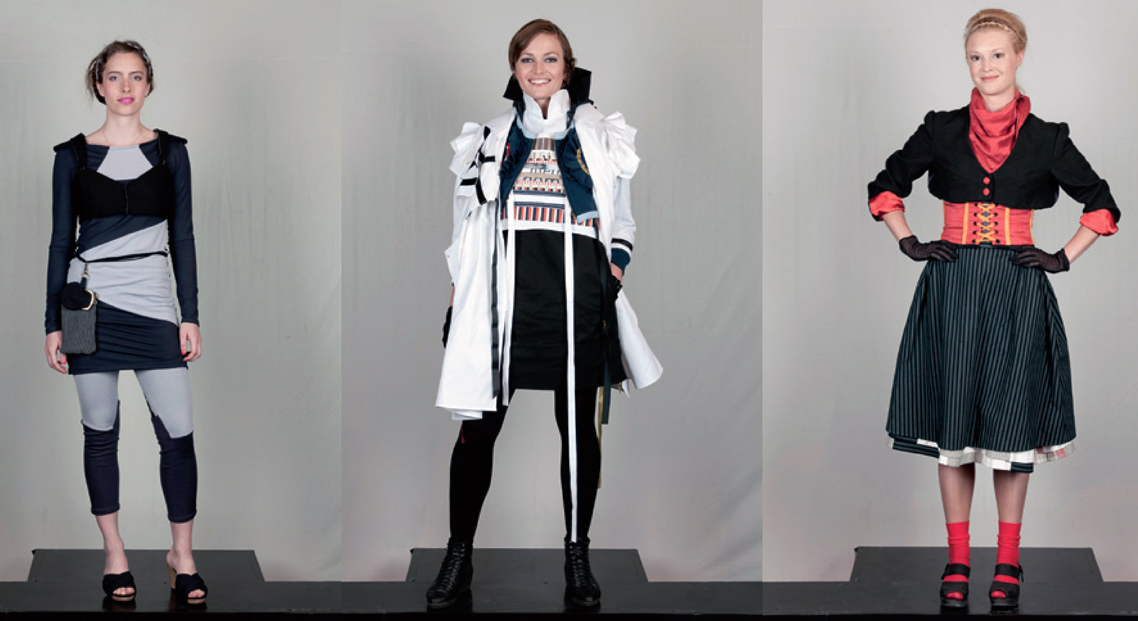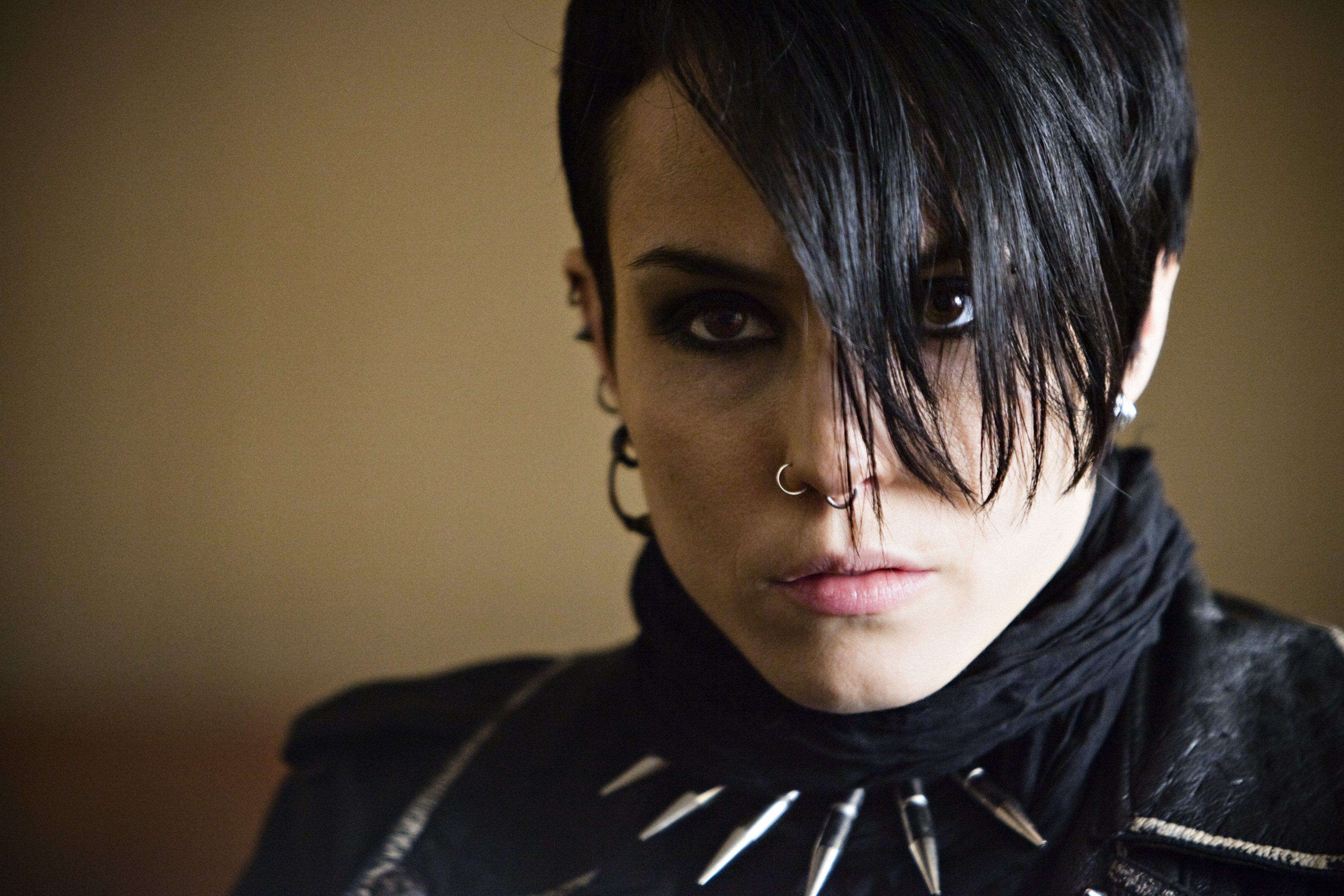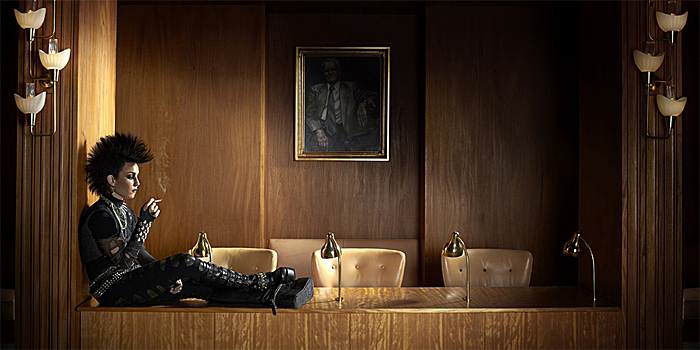‘Dressing Swedish’ opens in Seattle
The exhibition, originally created for House of Sweden, also utilizes local resources and the museum's permanent collection.
-
 From teh museum's permanent exhibition: Today, folk costumes are worn as formal dress at major dinners and festivities.
From teh museum's permanent exhibition: Today, folk costumes are worn as formal dress at major dinners and festivities. -
-
The exhibition, Dressing Swedish: From Hazelius to Salander, showing at the Nordic Heritage Museum September 12 through November 10, explores the complex relationship between Swedish fashion and traditional Swedish folk costumes.
Garments, fabric and designs are used to create complex family trees, erase time periods and articulate multiple places of belonging. Through displays featuring costumes both traditional and re-created by contemporary designers, along with new urban dress from Sami and Swedish designers, the exhibition tackles the notion of what it means to “dress Swedish” and how this has developed over time. -
 Personal and yet Swedish?
Personal and yet Swedish? -
-
Pieces from the Nordic Heritage Museum's permanent collection, such as Swedish folk costumes, Ballard bunads and textile artifacts accompany the exhibition. In addition, local members of the Swedish community will showcase outfits that reflect individual and contemporary ways of dressing Swedish and Svenska Skolan (Seattle’s Swedish School for children) will show off Pippi Longstocking costumes.
Fashion and folk costumes have always overlapped, and traces of older fashion styles can also be found in folk costume designs. In 1872, Artur Hazelius, founder of Nordiska museet in Stockholm, observed how modern fashion increasingly began to replace the folk costume. The large-scale collecting and documentation effort gathered momentum in cultural history museums, powered by a desire to preserve folk culture for posterity. -
 And the Swedish version (by Noomi Rapace) an older, more muscular character and perhaps more in line with Larsson’s original Salander?
And the Swedish version (by Noomi Rapace) an older, more muscular character and perhaps more in line with Larsson’s original Salander? -
Today, folk costumes are worn as formal dress at the Nobel Prize Banquet and at the official openings at Swedish Parliament and the Sámi Parliament. In keeping with folk tradition and modern fashion, the Swedish Tourist Association (STF) launched a competition—Folk Costume 2.0—to celebrate its 125th anniversary. Twenty-five of Sweden’s most talented young designers were asked to choose a province in which to experience local culture and gather inspiration to create new, updated folk costumes for the region.
The Swedish traditional dress that is worn in the United States is dynamic and increasingly individualized. It has a basic form that is recognizable as a folk costume, but it's subject to change based on the choice of fabric, color and patterns that are controlled by the manufacturers and creative individuals.
In terms of urban dress, Lisbeth Salander—the antisocial computer hacker and anti-heroine in Stieg Larsson’s Millennium Trilogy series—is an icon for a new Swedish urban femininity. Young women publish photographs on the Internet of themselves dressed like Lisbeth, and the H&M Dragon Tattoo Collection by Trish Summerville was inspired by the character.
The exhibition Dressing Swedish: From Hazelius to Salander was originally produced for House of Sweden, Washington D.C. by co-curators Dr. Charlotte Hylten-Cavallius, Multicultural Society, Tumba, and Dr. Lizette Gradén, Nordic Heritage Museum, Seattle, with support from Multicultural Society, Svenska Institutet, Kulturrådet. -
 Swedish style. ..the fully developed punk persona Lisbeth Salander comes out as she sets out to prove her innocence and plot revenge against the man and the corrupt government institutions that almost destroyed her life...
Swedish style. ..the fully developed punk persona Lisbeth Salander comes out as she sets out to prove her innocence and plot revenge against the man and the corrupt government institutions that almost destroyed her life... -
In conjunction with the exhibition, the museum will offer related programs including:
Thursday, September 12, 6-8 p.m. Member & Press Preview: Members & press are invited to this special preview reception.
Wednesday, September 25, 7 p.m. Folk Costume Fashion Show: the Museum hosts this folk costume fashion show with folk music, dancing, and food.
Thursday, October 10, 7 p.m. Nordic Fashion: Empowering Women: Join us for an evening of fashion talks, discussion, shopping, and music with women from the Nordic countries and local businesses who have built careers around design and entrepreneurship.
Stay tuned to the Nordic Heritage Museum website at www.nordicmuseum.org for more information.
Exhibition support is provided by Barbro Osher Pro Suecia Foundation, Swedish Council of America, and Jane Isakson Lea with seasonal support by 4Culture, Artsfund, and Seattle Office of Arts & Culture.
Also on view at the Nordic Heritage Museum: The visiting exhibition Eino – 50 Years of Making Sculptures will be on view from September 27 through December 7. The exhibit celebrates Finnish artist Eino Romppanen’s 50th year of work as a stone sculptor.
About the Nordic Heritage Museum
With over 55,000 visitors annually, the Nordic Heritage Museum is a cultural treasure in the Pacific Northwest. It is the only museum in the United States that represents the cultural heritage of all five Nordic countries: Denmark, Finland, Iceland, Norway and Sweden. The museum’s mission is to share Nordic culture with people of all ages and backgrounds by exhibiting art and objects, preserving collections, providing educational and cultural experiences and serving as a community gathering place. The Nordic Heritage Museum presents a wide range of vibrant programs including contemporary art exhibitions, outstanding concerts, lectures and films and a variety of special events throughout the year.
Museum hours: Tues-Sat 10 a.m.-4 p.m.; Sun 12 noon-4 pm; Mon closed
Admission: $6 general; $5 seniors & college students; $4 children over 5 years; FREE for children under 5 and museum members; free on first Thursdays
The museum is located at 3014 NW 67th Street, Seattle, WA 98117.
www.nordicmuseum.org -
-
